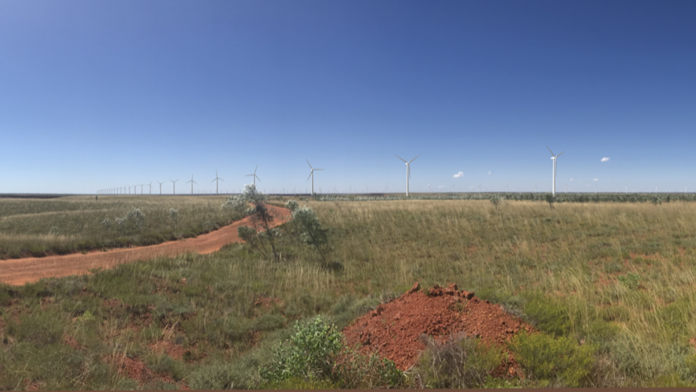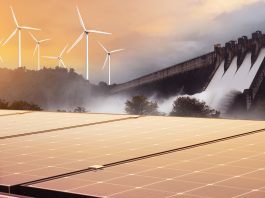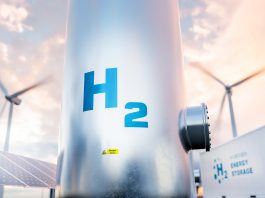The Ammonia Energy Association’s Trevor Brown and Julian Atchison explore ammonia’s emerging role in the energy transition.
With the global energy transition taking shape, zero and low-carbon solutions need to be sourced. Ammonia, an inorganic compound of nitrogen and hydrogen, has an emerging potential to assist with this global endeavour, with promising applications as a fuel for electric power generation or maritime transport and a hydrogen carrier and carbon-free energy commodity. Currently, the compound is used in fertilisers, chemicals, and explosives, for example.
Now, with the demand for sustainable energy rising, industry is looking at ways to decarbonise ammonia production for existing applications, as well as ensuring that low-carbon ammonia can be adopted in a variety of ways.
To find out more about ammonia’s potential in the energy transition, The Innovation Platform asked the Ammonia Energy Association – which aims to accelerate the adoption of ammonia energy – about the current efforts to produce and decarbonise the commodity.
What is the potential for the role of renewable ammonia in the global energy transition?
Ammonia is emerging as a potential fuel for long-distance shipping, heavy transport by locomotive, as a fuel for power generation, and of course, as an export vector for hydrogen to be moved from one side of the globe to the other. Ammonia is also showing promising signs in fuel cell and off-grid applications, such as gensets for construction sites and data centres, and for short-distance shipping. We are even starting to explore aviation applications.
A few years ago, ammonia was thought of as just a ‘carrier’ for hydrogen: turn your hydrogen into ammonia at point A, ship it to point B, and then convert it back to hydrogen by a process called ‘cracking’. But the potential number of applications for ammonia as a direct fuel is growing, and there are lots of field tests and trials underway.
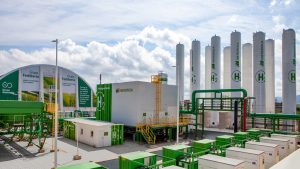
Renewable ammonia adds another facet to all this. Renewable energy (along with other technology pathways) will help drive the decarbonisation of existing ammonia production. The ammonia sector produces about 1% of the world’s annual GHG emissions, so decarbonising it is a very worthwhile exercise.
Renewable also means you can start to harness resources that have not been part of our thinking to this point – namely wind and solar energy in places like Western Australia, Oman, Chile, Spain, and South Africa. Sunshine from south of or near the equator can be captured and exported in liquid fuel form to energy import-dependent locations like Europe and Japan.
It has been widely reported that some of these renewable ammonia projects are being developed as ‘supergiants’ in terms of size: millions of tonnes each year. Meeting future demand from new applications and also meeting our existing requirements will require mass scale-up of global production, and this is where the renewable supergiants have an important role to play.
What work is the Ammonia Energy Association doing to accelerate the development and adoption of ammonia energy? What are your key priorities/focuses currently?
For a while now, the energy space has talked about hydrogen and ammonia in terms of colours. Colours are great when communicating a general idea, for example, “green is made with renewable energy,” or “blue is made with gas and carbon capture and storage,” etc. But they are not nuanced, and colours do not tell consumers and other producers all the information they need to know. Worse, colours can obfuscate key details and confuse carbon accounting methods. You also need to add a new colour (or a shade of an existing one) every time a new production pathway emerges, and what was once a simple system could become unwieldy.
The best way to communicate is via numbers. Primarily one number: carbon intensity per unit of product, for example, CO2e per tonne of ammonia produced. You should also be transparent on key questions. Where have the boundaries been drawn, has transport of the product and/or feedstock been included, are you including Scope 3 emissions, etc.?
To this end, the AEA is currently developing an ammonia certification scheme. An important point here is that many new ammonia producers are looking at pure-play renewables, and baking in zero or near-zero carbon emissions for their production processes. We celebrate this, but there are 180 million plus tonnes worth of existing producers that have a whole lot of decarbonisation work to do.
They need a certification system to help them do that and also allow their product to be traded in a decarbonised market. Now, this scheme is our primary focus. We are well-regarded as a knowledge steward and educator (and have been for some time), but this is our first big foray into action.
Can you explain more about the efforts to decarbonise the commodity for existing applications? What are the challenges facing these efforts?
Optimisation of conventional industrial processes is almost at its peak. There are amazing things being done in catalyst R&D, advanced computing, and Artificial Intelligence integration into plants, and there is current commercial tech that allows production units to be ‘turned down’ to unheard-of levels. However, the basic components of the ammonia production process have been the same for decades.
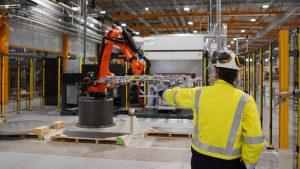
The area of opportunity for conventional or ‘first generation’ ammonia production lies in decarbonising the hydrogen feedstock. Steam methane reforming (SMR) is the current method of choice globally, but consumes natural gas as a feedstock. Combined with the necessity to combust more of that gas as fuel to power the process, SMR is emissions-intensive. Electrification of the SMR process or switching to auto-thermal reforming (ATR, where some product hydrogen is repurposed as a combustion fuel), and integrating carbon capture and storage are pathways to minimise the emissions. In places like North America, this is the focus of existing producers, with some ‘second generation’ projects under development.
‘Second generation’ ammonia production removes SMR, replacing it with electrolysis to produce hydrogen. Using just air, water, and power, hydrogen can be produced at industrial volumes. The problem of connecting electrolysers to variable renewable energy is quickly being solved, with buffer storage, battery power, and a host of technical fixes helping to smooth out the feedstock supply for ammonia production.
There is a great example of this concept going through testing and fine-tuning in Puertollano, Spain (Iberdrola, Fertiberia, and Nel), and in Denmark there is a project under development where a ‘dynamic’ ammonia plant will be directly connected to wind and solar power (Topsoe, Vestas, and Skovgaard). The real challenge for electrolysis is: where does the power come from? If you cannot generate enough yourself, can you easily hook up to the grid, and what is the carbon intensity of that electricity? Water is also a critical issue: can you guarantee a reliable, sustainable water source that does not deplete the natural environment, or put you in competition with water for the local community?
Then there is ‘third generation’ ammonia production. Conventional ammonia production has fed the world for a 100 years, but what if you could make ammonia from the air, water, and power at lower temperatures and pressures, not only saving energy but also enabling ‘point of use’ production (this would be ideal for farmers). Commercialisation of ‘third generation’ processes is underway, with a heap of start-ups hard at work, particularly in the US and Australia. But moving this concept from the laboratory bench to the farm shed has not happened yet, so we wait in eager anticipation.
What would you highlight as the most standout projects or innovations in the production of the commodity over the last few years?
Anything that significantly drops the carbon intensity of ammonia production is worth celebrating. We need all three generations to work together to achieve the transition. It is not controversial to say that zero or near-zero carbon will win out, but we are only at the start of a difficult journey. Green innovations here and now have a critical role to play, but they are not the full story.

As mentioned above, Puertollano is a stand-out example of connecting renewable hydrogen feedstock supply to an existing ammonia plant. Yara and ENGIE’s Project Yuri in Western Australia will also be another great example, and they have big plans at what is one of the world’s significant ammonia production sites. The mega-scale NEOM project in Saudi Arabia has also begun construction this year.
There are lots of supergiants still in the planning phase, but when bp decided to purchase a controlling stake in the Asian Renewable Energy Hub earlier this year, that really felt like a decisive moment. Also, keep an eye on the rise of emerging national players. In particular, India has announced policy measures that help unlock mass renewable energy build-out, and access to renewable power for ammonia producers, wherever they are located within the country.
Technological innovations are aplenty. The old adage “when the wind doesn’t blow, and the Sun doesn’t shine” is quickly becoming an afterthought. Systems are being designed to smooth out renewable energy delivery and make the most efficient use of electricity when it is available. The mass scale-up of electrolyser manufacturing is coming and will be here sooner than we think. Catalyst R&D is starting to wean itself off expensive and rare materials – especially important for ‘third-generation’ processes. People are solving the problems we thought were too steep just a couple of years ago and it is exciting to see.
What is on the horizon for renewable ammonia production in the coming years?
Hopefully mass scale-up. In 2050, demand for ammonia as a shipping fuel could be two to four times the current global production output. As in, all the ammonia that we currently utilise for fertiliser production, and then some. We are still going to need fertiliser (and likely more of it) in 2050. Now, we are starting to see private and public players sign import/export agreements.
Demand needs to be demonstrated to allow project developers to move forward, so there is a ‘chicken and egg’ element to all this. But just a few years ago, one of the only significant consumers for ammonia fuel appeared to be coal co-combustion in Japan. The landscape has shifted so much since then, and the potential has expanded beyond what we thought possible.
Our recent collaboration with Mission Possible Partnership has set out key milestones for the global ammonia industry by 2030. In order for the global ammonia sector to achieve net-zero emissions by the middle of this century:
- At least 70 gigawatts of electrolysers dedicated to ammonia production will need to be installed by 2030;
- A supply share of at least 50 million tonnes of near-zero-emissions ammonia will need to be established; and
- At least 40 world-scale, ‘green’ ammonia plants will need to be fully operational.
The next few years will be both daunting and exciting for the industry, and we can’t wait to be part of the transition.
Trevor Brown
Executive Director
Julian Atchison
Communications Manager
Ammonia Energy Association
https://www.ammoniaenergy.org/
https://www.linkedin.com/company/ammonia-energy-association-aea/
https://twitter.com/AmmoniaEnergy
Please note, this article will also appear in the twelfth edition of our quarterly publication.

